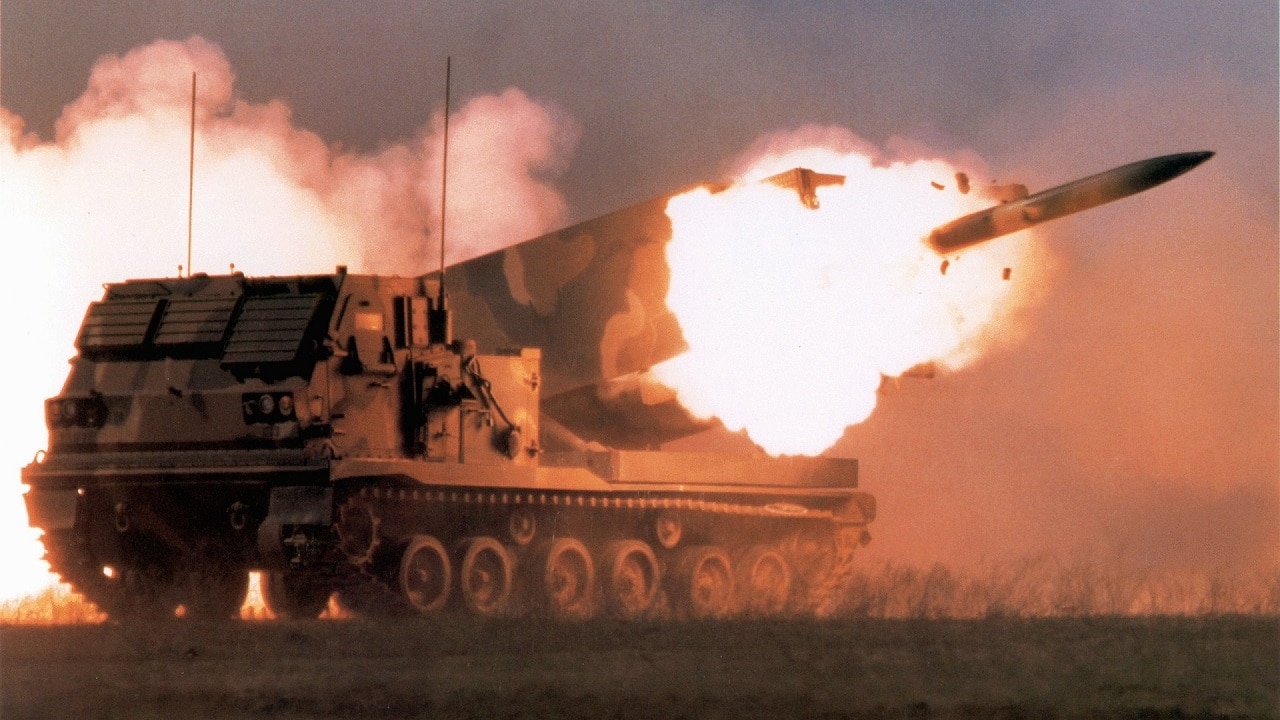A video was shared to social media on Tuesday evening that showed a U.S.-made M270 employed by the Ukrainian military launching a salvo of Guided Multiple Launch Rocket System (GMLRS) rockets toward Russian positions.
The 33-second-long clip was posted by open-source military intelligence watcher OSINTtechnical (@Osinttechnical).
The location of the video hasn’t been confirmed, but the M270 was believed to be operating in the Donbas region.
Guide the Way!
The Guided Multiple Launch Rocket System (GMLRS) is a surface-to-surface system that can be employed to attack, neutralize, suppress, and destroy targets using indirect precision fires up to 70-plus km (44 miles).
GMLRS munitions are touted to have greater accuracy than ballistic rockets with a higher probability of kill and a reduced logistics footprint.
The current GMLRS family of munitions produced for use by the U.S. military consists of three fielded variants: Dual-Purpose Improved Conventional Munition (DPICM) and the Alternative Warhead (AW) variants to service area targets; as well as the Unitary variant, which is equipped with a single 200-pound-class high-explosive charge to service point targets with low collateral damage.
GMLRS is now employed with the M270A1 Multiple Launch Rocket System (MLRS) and M142 High Mobility Artillery Rocket System (HIMARS) launchers.
The M270 MLRS in the Spotlight
Though much has been made of the M142 HIMARS that has been supplied to Kyiv, the Ukrainian military is also operating the M270 MLRS, which was developed for the U.S. military during the Cold War for use against the Soviet Union.
It has been in service since 1983, but first saw use in combat during the 1991 Gulf War.
It is now in operation with the armed forces of Bahrain, Finland, Egypt, France, Germany, Greece, Israel, Italy, Saudi Arabia, Japan, South Korea, Turkey, the U.S., and the UK.
The system is also built in Europe by an international consortium of companies from France, Germany, Italy, and the UK. Those nations provided more than ten of the systems to Ukraine last year.
The MLRS launcher unit consists of an M270 launcher loaded with 12 rockets, packaged in two six-rocket pods. The launcher is mounted on a stretched Bradley chassis and comprises a highly automated self-loading and self-aiming system. It includes a fire control computer that integrates the vehicle and rocket-launching operation.
The M270 vehicle is operated by a three-man crew, including a driver, gunner, and section chief – and without leaving the cab the crew can fire up to a dozen of its MLRS family of munitions (MFOM) in less than one minute.
A unique feature of the M270 is that it has no launching rails, instead, the rockets are fired straight from the containers. Rockets can also be stored in containers without any maintenance for up to 10 years. And like other mobile rocket launchers, it can shoot and then be on the move again before an enemy can begin its counter-fire.
A Ukrainian M270 launches off a salvo of GMLRS rockets. pic.twitter.com/5Mzx8hcput
— OSINTtechnical (@Osinttechnical) May 17, 2023
MORE: The War in Ukraine Is About to Explode
MORE: Does Putin Have Cancer?
Author Experience and Expertise
A Senior Editor for 19FortyFive, Peter Suciu is a Michigan-based writer. He has contributed to more than four dozen magazines, newspapers, and websites with over 3,200 published pieces over a twenty-year career in journalism. He regularly writes about military hardware, firearms history, cybersecurity, politics, and international affairs. Peter is also a Contributing Writer for Forbes and Clearance Jobs. You can follow him on Twitter: @PeterSuciu.

